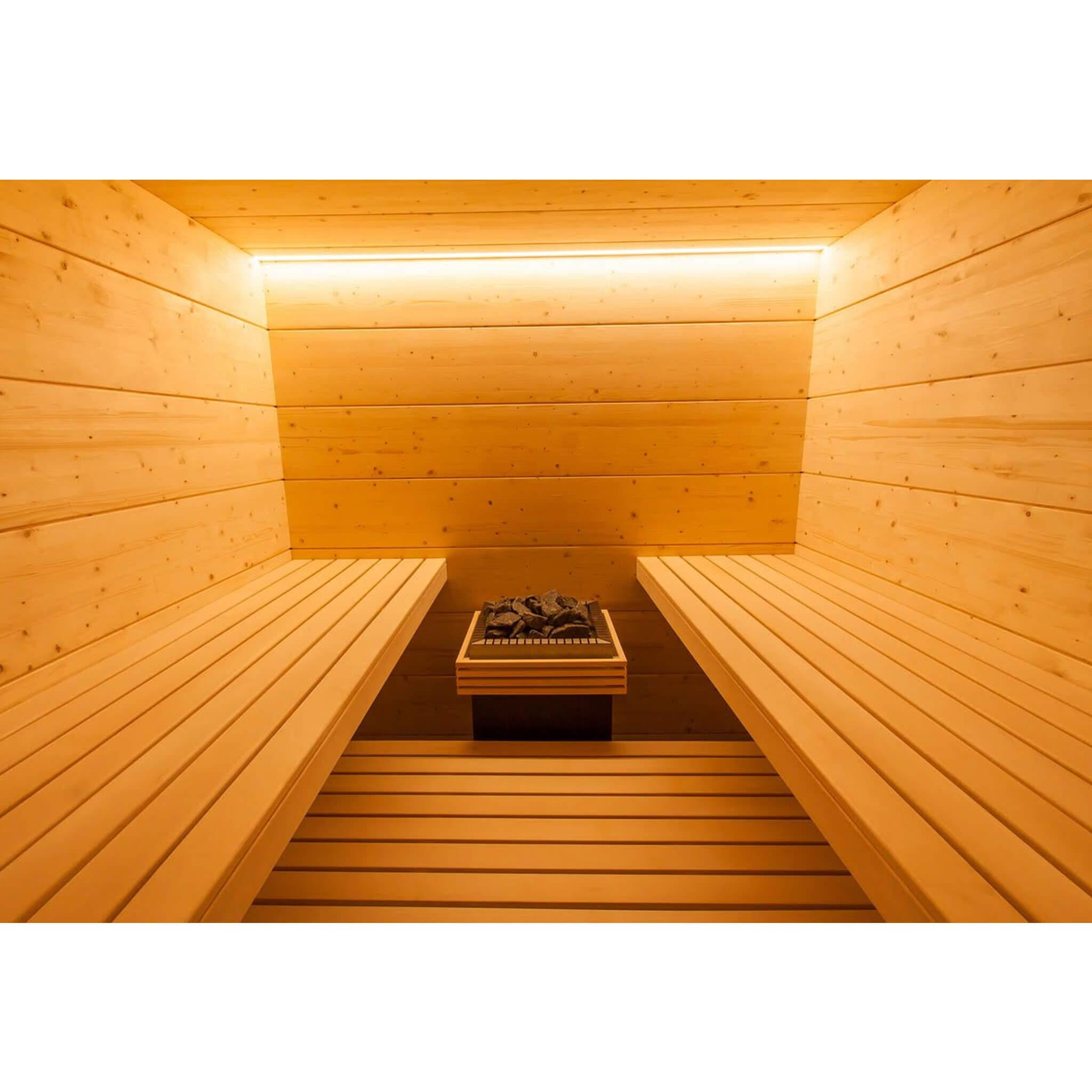The Definitive Guide to Traditional Sauna
The Definitive Guide to Traditional Sauna
Blog Article
A Biased View of Traditional Sauna
Table of ContentsNot known Incorrect Statements About Traditional Sauna The Single Strategy To Use For Traditional SaunaThe Ultimate Guide To Traditional SaunaThe Ultimate Guide To Traditional SaunaSome Ideas on Traditional Sauna You Should Know
A lot of the weight lost in a sauna is water loss and is re-gained upon rehydrating. However, undeniably sauna can be a fundamental part of a healthy and balanced weight reduction program. To look at the differences between standard and IR saunas, I will certainly divide these right into verifiable, theoretical, and produced distinctions.Therefore, the hottest factor in the saunawhich is at the ceiling straight over the sauna heateris usually in between 185 and 190 F. Claims that a typical sauna surpasses 200 F is just not true and not appropriate for electric saunas sold in the United States. The temperature level for a far-infrared sauna is generally established in between 120 and 140 F; nevertheless, unlike the standard sauna, the goal in and IR room is not to achieve a high temperature.
Since of this, the temperature distinction is nearly unnecessary, since profuse sweating causes both sauna kinds, however the technique of heating the body is various. In an IR sauna the bather will certainly feel hot and will sweat a lot, however at much reduced temperature levels. Traditional Sauna. Therefore, if the goal is to invest longer amount of times in the sauna, the IR sauna is a great option

6 Easy Facts About Traditional Sauna Shown

When the high temperature is achieved, the components cycle on and off to preserve the heat. Traditional Sauna. The majority of standard sauna users enjoy putting water over the rocks to develop vapor to increase sauna moisture levels. The advantages of putting water over the rocks include: making the room a lot more comfy, dampening the nasal passages, and enabling the use of aromatherapy by mixing necessary oils with the water
In a far-infrared sauna, the heat waves permeate the body to successfully warm the body and elevate the body core temperature level. To achieve this enhanced temperature level, Far-infrared emitters develop infrared power which is close to the exact same wavelength as that which the body naturally emitsoften described as the "Vital Array" of 7 to 14 microns), so the power is well gotten by the body.
When the energy enters the body, it causes the body temperature to increase and ultimately causes sweat. In an infrared sauna it is essential for the emitters/heaters to remain on practically continuously. Because there is no mass of rocks to keep heat, the sauna will cool down if the emitters turned off.
Getting My Traditional Sauna To Work
As pointed out over, the sauna bather in an infrared space intends to position himself in front of operating emitters to get maximum take advantage of the heat. The home heating time for the 2 areas can be very different, depending on how the rooms are utilized. For a typical sauna, a bather needs to enable 30-40 mins for the space to attain a preferred temperature level and to appropriately pre-heat the rocks.
A well built sauna will normally achieve a temperature of 150-160 F in concerning 30-40 mins. For hotter temperatures, the space might require to warmth for a longer period.

Conventional saunas tend to be larger (for this reason make use of more electrical power) than infrared saunas, although standard over here saunas are certainly readily available in one and two individual dimensions. For a two-person conventional sauna, 5x6 or 5x7 dimension is most click for more info popular. The top bench can comfortably seat two or 3 individuals and is additionally enough time to relax throughout the sauna session.
Traditional Sauna Fundamentals Explained
The average expense per kWH of power in the U.S. is around $0.11 - Traditional Sauna, so a 4.5 kW heater will certainly set you back approximately $.50 to compete one hour, if the heater runs continually for one hour. Generally a sauna heating system will compete 75% of the very first hour and 50% of subsequent hours on given that the aspects cycle once the set temperature is attained
A two individual far-infrared area is generally physically smaller than a conventional sauna, often regarding 4' x 4' or smaller sized. The IR heater is typically 1.5-1.7 kW making use of a 120 volt 15 amp plug-in solution. Because the area can be used quicker than a sauna space, we will certainly assume the room is utilized for to of an hour consisting of warmth up time.
Finally, there is a seldom gone over distinction in the social experience in between the two rooms. While our society has actually shed some of the social benefit of the conventional sauna experience, it can be extremely socially satisfying. From family members time in the sauna, to heart-felt discussions with better halves, to sauna partiesthe typical sauna experience can bring about intimate mingling.
Traditional Sauna Fundamentals Explained
A lot of higher end infrared rooms include tinted light treatment, sound systems look at here now and full-glass fronts.
Report this page